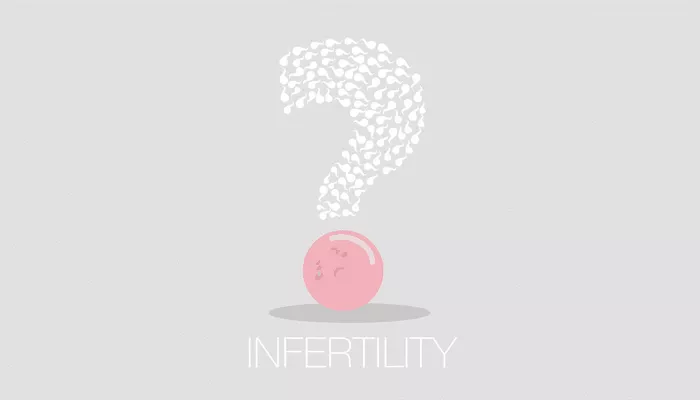Fibroids are a common condition among women of reproductive age. These benign tumors develop in or around the uterus and vary in size, number, and location. While some fibroids may affect fertility, others may not interfere with conception or pregnancy.
A subserosal fibroid is a type of uterine fibroid that grows on the outer wall of the uterus. Unlike other fibroids that develop inside the uterine cavity, subserosal fibroids extend outward and are less likely to impact the implantation of an embryo.
Many women wonder if they can conceive and carry a healthy pregnancy while having subserosal fibroids. This article explores how subserosal fibroids affect fertility, potential complications during pregnancy, and available treatment options.
What Is a Subserosal Fibroid?
A subserosal fibroid forms on the outer surface of the uterus. It is one of the most common types of fibroids and often grows without causing symptoms. Unlike fibroids that develop inside the uterine wall or cavity, subserosal fibroids do not usually interfere with menstrual cycles or fertility.
How Do Subserosal Fibroids Develop?
Fibroids develop from the smooth muscle tissue of the uterus. Their exact cause is unknown, but several factors contribute to their growth.
Hormonal changes, particularly estrogen and progesterone fluctuations, play a major role in fibroid formation. Genetic predisposition also influences fibroid development. If a woman’s mother or sister has fibroids, she is more likely to develop them.
Subserosal fibroids can vary in size. Some are small and remain unnoticed, while others grow large and press against surrounding organs. Their growth rate depends on hormone levels and overall health.
Can Subserosal Fibroids Affect Fertility?
Most subserosal fibroids do not directly impact fertility because they grow on the outer layer of the uterus. However, their size and location may cause complications that indirectly affect a woman’s ability to conceive.
Large Fibroids and Uterine Shape
If a subserosal fibroid grows large, it may distort the shape of the uterus. A misshapen uterus can put pressure on the fallopian tubes or ovaries, making it more difficult for an egg to travel and be fertilized.
Pressure on Surrounding Organs
A large subserosal fibroid may press against the bladder, intestines, or other pelvic structures. This can lead to discomfort, frequent urination, and bloating, but it may also affect reproductive function.
Impact on Blood Flow
Although subserosal fibroids are outside the uterus, some can affect the blood supply to the uterus or ovaries. A reduced blood flow to the uterine lining can make implantation less likely.
Pregnancy with Subserosal Fibroids
Many women with subserosal fibroids successfully conceive and carry healthy pregnancies. However, there are some potential risks that should be monitored.
Does a Subserosal Fibroid Increase the Risk of Miscarriage?
A small subserosal fibroid is unlikely to cause miscarriage. However, if the fibroid is large or growing rapidly, it may interfere with uterine expansion during pregnancy. In some cases, this can lead to pregnancy loss, especially if the fibroid compromises blood flow to the placenta.
Can a Subserosal Fibroid Cause Preterm Labor?
If a fibroid grows significantly during pregnancy, it can put pressure on the uterus. This may trigger contractions and increase the risk of preterm labor. Regular monitoring is important to detect any changes in fibroid size during pregnancy.
Does a Subserosal Fibroid Affect Fetal Growth?
Most subserosal fibroids do not affect fetal development. However, if a fibroid is extremely large, it may take up space in the abdomen and limit fetal growth. In rare cases, fibroids can lead to fetal position abnormalities, such as breech presentation.
Symptoms of Subserosal Fibroids During Pregnancy
Many women with subserosal fibroids experience no symptoms during pregnancy. However, some may notice certain discomforts.
Pelvic Pain and Pressure
A large subserosal fibroid can cause pelvic pain, especially as the uterus expands. The pain may worsen as the pregnancy progresses.
Frequent Urination
If the fibroid presses against the bladder, it may cause an increased need to urinate. This symptom is more noticeable in the second and third trimesters.
Constipation and Bloating
A subserosal fibroid that presses against the intestines can slow digestion, leading to constipation and bloating.
Lower Back Pain
A fibroid growing toward the back of the uterus may cause lower back pain. The pain may become more pronounced as the pregnancy progresses.
Treatment Options for Subserosal Fibroids
Not all fibroids require treatment. If a woman has a small subserosal fibroid and no symptoms, her doctor may recommend regular monitoring rather than immediate treatment.
Medications to Manage Fibroids
Some medications help control fibroid growth by regulating hormone levels. Gonadotropin-releasing hormone (GnRH) agonists can shrink fibroids temporarily, but they are not recommended during pregnancy.
Surgical Removal of Fibroids
In cases where a subserosal fibroid is large and causing significant discomfort, surgical removal may be an option. A myomectomy is a procedure that removes fibroids while preserving the uterus.
Lifestyle and Dietary Changes
Maintaining a healthy lifestyle can help manage fibroid symptoms. Eating a diet rich in fruits, vegetables, and whole grains supports hormone balance. Regular exercise may also help reduce fibroid-related discomfort.
When to See a Doctor
Women with subserosal fibroids should seek medical advice if they experience severe pain, heavy bleeding, or difficulty conceiving. A gynecologist can evaluate the size and location of the fibroid and recommend appropriate treatment options.
Fertility Evaluation
If a woman is trying to conceive and has fibroids, a fertility evaluation may be necessary. This can include imaging tests such as ultrasound or MRI to assess uterine structure.
Pregnancy Monitoring
For women who become pregnant with subserosal fibroids, regular prenatal check-ups are essential. Monitoring fibroid growth and potential complications can help ensure a healthy pregnancy.
Conclusion
Subserosal fibroids are common, and many women with these fibroids can conceive and have successful pregnancies. While small fibroids usually do not interfere with fertility, large or rapidly growing fibroids may cause complications.
Regular medical check-ups, lifestyle adjustments, and proper treatment can help manage fibroids effectively. Women with concerns about fertility or pregnancy should consult their doctor to determine the best approach for their individual situation.
Related topics:






















